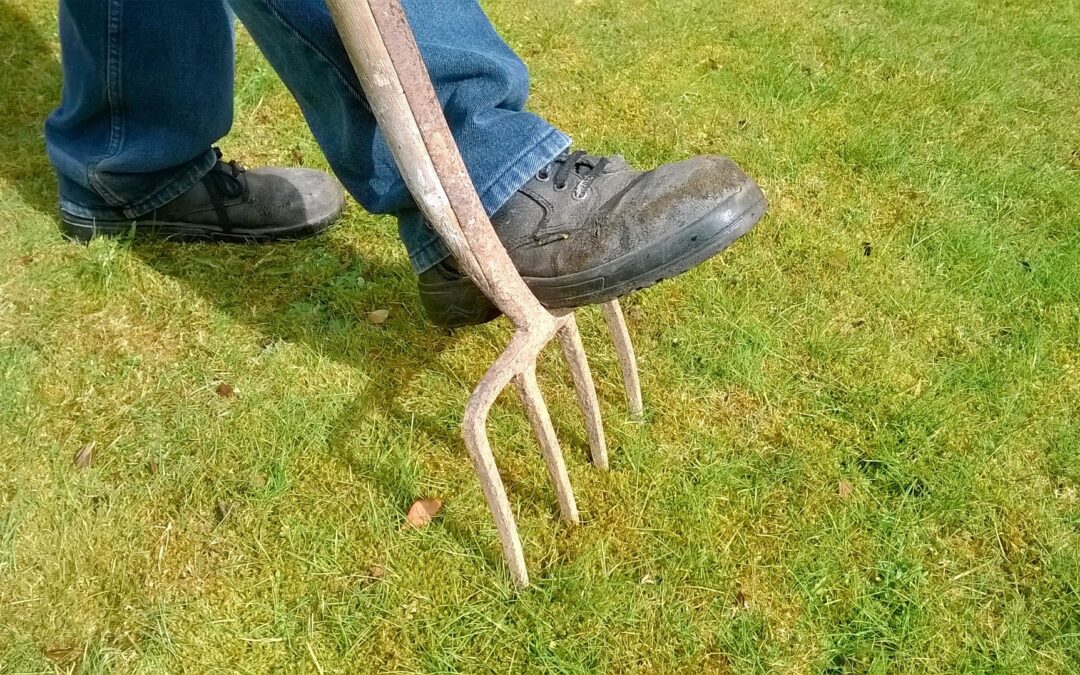Do you winterize your lawn? Dethatch it? Overseed it? Some of these terms can be unfamiliar to the average homeowner, but they’re common knowledge in the world of landscaping and lawn care. As such, it can be difficult to tell whether some techniques matter or not.
Lawn aeration is another example.
Since not everybody aerates their lawn and some might even ask themselves “is lawn aeration a gimmick?,” it begs the question: is it even necessary? It depends on your goals and where you live. For those in North Texas, here are some reasons why lawn aeration is beneficial and some best practices for doing so.
Why Aerate Your Lawn in North Texas?
For starters, if you don’t know what aeration even is, it involves creating small holes in the soil to allow air, water and nutrients to better reach grass roots. If water and air can’t reach the roots, the roots won’t benefit from them. But this process can be particularly beneficial for lawns in North Texas for several reasons. Here are a few of them:
- It alleviates soil compaction. When soil particles are pressed together, they get compacted, reducing pore space and limiting movement of air, water and nutrients. This hinders root growth and can lead to a thin, unhealthy lawn. But aeration can alleviate this by creating “pathways” that allow for air and water to penetrate deeper, promoting healthier root systems and more robust grass growth.
- It improves water infiltration. Texas is known for heavy rainfall followed by long periods of dry spells. Compacted soil in this environment can lead to poor water filtration, causing water to run off instead of soaking into the ground. Aeration remedies this, reducing runoff and ensuring your lawn receives the moisture it needs during dry periods.
- It enhances nutrient uptake. Just as water can reach grass roots effectively in North Texas conditions a lot of the time, nutrients from fertilizers and organic matter can’t, either. But aeration helps here as well, leading to a more vibrant lawn that can withstand stress from heat, drought and foot traffic.
- It reduces thatch buildup. Thatch is a layer of dead grass, roots and debris that accumulates on the soil surface. A thin layer is normal, but too much can prevent air/water/nutrients from reaching the soil. Aeration brakes up the thatch, promoting its decomposition instead of letting it act as a barrier.
Is Aeration Necessary for Everyone?
The benefits of aeration are obvious, but you may not be sure if it’s necessary for you. While North Texas has a pretty standard general climate, certain circumstances vary depending on your lawn, its grass type and your soil composition. Lawn traffic is also a factor. Here’s what to consider for each of these areas and whether you should aerate regularly or not:
- Soil type: Clay soils are prone to compaction and greatly benefit from aeration, while sandy soils have larger particles and are less likely to compact. Aeration is needed less frequently for the latter soil type.
- Grass type: Warm-season grasses like Bermuda, St. Augustine and Zoysia benefit from aeration, especially in late spring or early summer when they’re actively growing. Cool-season grasses, on the other hand, are typically aerated in the fall or early spring. North Texas lawns tend to have warm-season grasses in general.
- Lawn traffic: High-traffic areas, whether from foot traffic or frequent use (e.g., sports fields, playgrounds) are more likely to suffer from soil compaction and benefit from more regular aeration. Low-traffic areas and lawns with minimal foot traffic don’t need to be aerated quite as frequently.
Best Practices for Lawn Aeration in Texas
If you’ve determined that aeration is right for your lawn, following best practices will help you achieve the best results. Here are some guidelines for aerating your Texas lawn:
- Timing: Warm-season grasses should be aerated in late spring or early summer; cool-season grasses should be aerated in fall or early spring.
- Equipment: Manual aerators are suitable for small lawns or specific trouble spots. They require more effort, but can be effective for minor compaction issues. Core aerators remove small plugs of soil from the lawn, providing deeper and more thorough aeration. Classic Turf Equipment has a variety of aerators for sale that you can purchase.
- Preparation: Mow the lawn to a shorter height than usual before aerating. This helps the aerator penetrate the soil more effectively. Water the lawn thoroughly a day or two before as well to ensure the soil is moist, but not waterlogged. This makes the soil easier to penetrate.
- Post-aeration care: After you’re done aerating, leave soil plugs where they are, fertilize with high-quality fertilizer and water regularly to help your lawn recover and encourage new root growth.
If you’re in need of aerator repair or are interested in purchasing an aerator for your lawn, Classic Turf Equipment is here for you. Stop by one of our North Texas locations today for a consultation or to browse the aerator products and services we have available.


Recent Comments